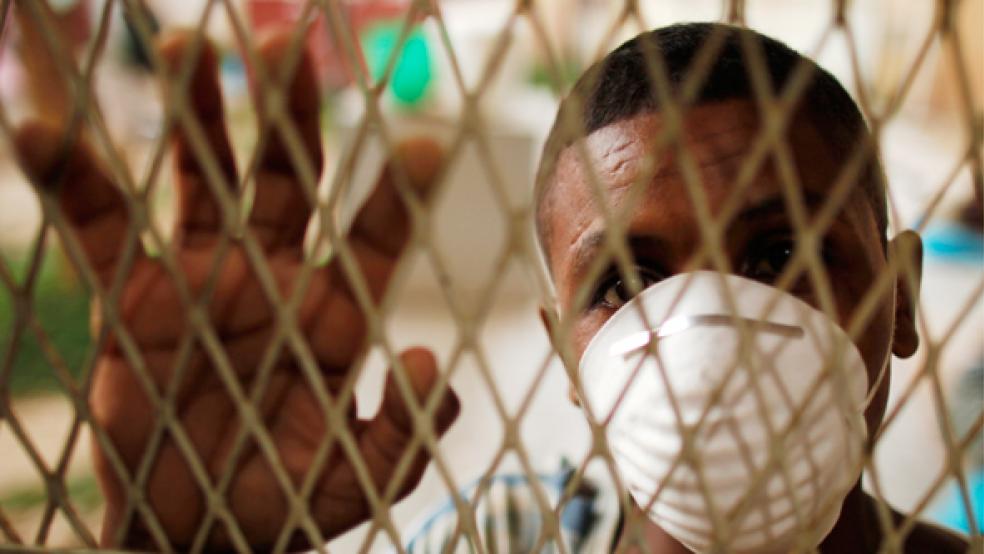Amid a growing crisis in financing treatments for AIDS, tuberculosis and malaria in the developing world, an arm of the World Health Organization will meet in Geneva later this month to consider alternative ways of producing lower-cost drugs, vaccines and diagnostic tools to fight the those diseases in poor countries.
A background report issued last month by a working group of the World Health Assembly called for establishing a global research and development treaty that would beef up research into cures for so-called neglected tropical diseases. It also called for the treaty to create mechanisms for ensuring the next generation of drugs for fighting those diseases could be produced by generic firms at prices barely above the cost of manufacturing.
In calling for governments to double their investment in research and development, the report identified not just the “big three” of AIDS, tuberculosis and malaria, which have received significant research attention over the past decade, but also the so-called “neglected diseases” like Chagas or leishmaniasis, which kill or debilitate millions of Africans, Latin Americans and Asians annually. The intellectual property created by the new global research fund would be made available through a patent pool to any company or state-run firm willing to produce the drugs on a cost-plus basis.
The ideas is already gaining traction at some hard-pressed international institutions, which are seeing their funding cut by U.S. and European nations because of their long-term budget crises. In 2010, UNITAID, an arm of the United Nations, created a patent pool that received support from at least one leading AIDS drug manufacturer, Gilead Sciences, Inc. The Pool for Open Innovation against Neglected Tropical Diseases, created by GlaxoSmithKline and transferred last year to the World Intellectual Property Organization, is just getting off the ground.
The pooling idea was pushed to the forefront by global health activists at groups like Doctors Without Borders, who worry about access to the next generation drugs to fight HIV/AIDS. Many patients on long-term therapy develop resistance to their initial generic regimens and need to be switched to the latest on-patent drugs.
In addition, companies like Gilead are introducing new combination pills that make it easier for patients to stay compliant with the complicated daily pill schedules. Lack of adherence is a major cause of treatment failure and the rise of resistant strains of HIV/AIDS.
“The patent pool can bring together the intellectual property for large numbers of individual drugs which need to be packaged in fixed-dose combinations,” said Robert Hecht, managing director for global health at Results for Development Institute in Washington, D.C. “It makes it faster, easier and more efficient for the generic companies.”
His group last month issued a report funded by the Bill and Melinda Gates Foundation that praised the patent pool concept. However, it expressed concern that it wouldn’t have much impact on diseases where major drug and biotechnology companies are making few if any investments, such as Chagas or leishmaniasis. Companies that sell AIDS drugs have a large, lucrative market in the U.S. and Europe, so there is no shortage of R&D in the field.
The World Health Assembly will debate setting a goal of doubling the estimated $3.2 billion that is currently spent on research into cures, vaccines and diagnostics for neglected diseases. About 70 percent of that is provided by the U.S. with most from the government, which has lavished attention on HIV/AIDS research.
The U.S. has also invested heavily over the last decade in treating AIDS, tuberculosis and malaria. It sent $6.1 billion through 2011 to the multi-lateral Global Fund and $31.9 billion to the President’s Emergency Plan for AIDS Relief (PEPFAR), which was launched in 2003 by President George W. Bush.
The Global Fund, largely because of cuts by European governments, earlier this year announced it would no longer take applications for new grants until at least 2014. President Obama’s proposed budget included an increase for the Global Fund, but it was funded by cutting its request for PEPFAR, according to Judit Ruis, who works for Doctors Without Borders’ Access Campaign.
Those cuts threaten to defeat the Fund’s goal of having 15 million under treatment by 2015, which is about twice the current level. It prompted Bill Gates to announce at Davos in February that his foundation would donate $750 million to the cause.
But foundations cannot make up for lost investment in R&D, which has traditionally been the province of governments. The U.S. over the last decade has poured $13 billion into research on cures for neglected tropical diseases, mostly through the National Institutes of Health. “The U.S. is involved in half of the 200 drugs and vaccines in the pipeline for these diseases,” said Nils Daulaire, director of the Office for Global Health Affairs at the Health and Human Services Department.
At a forum at the Results for Development Institute Monday, Daulaire expressed concern that a World Health Organization-run patent pool could manage the R&D process, which, he said, needed to be nimble and researcher-friendly. “These traits are not always associated with government or WHO-run institutions,” he said.



